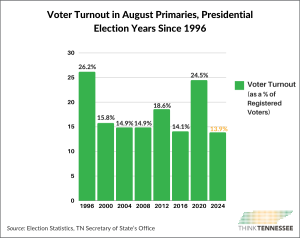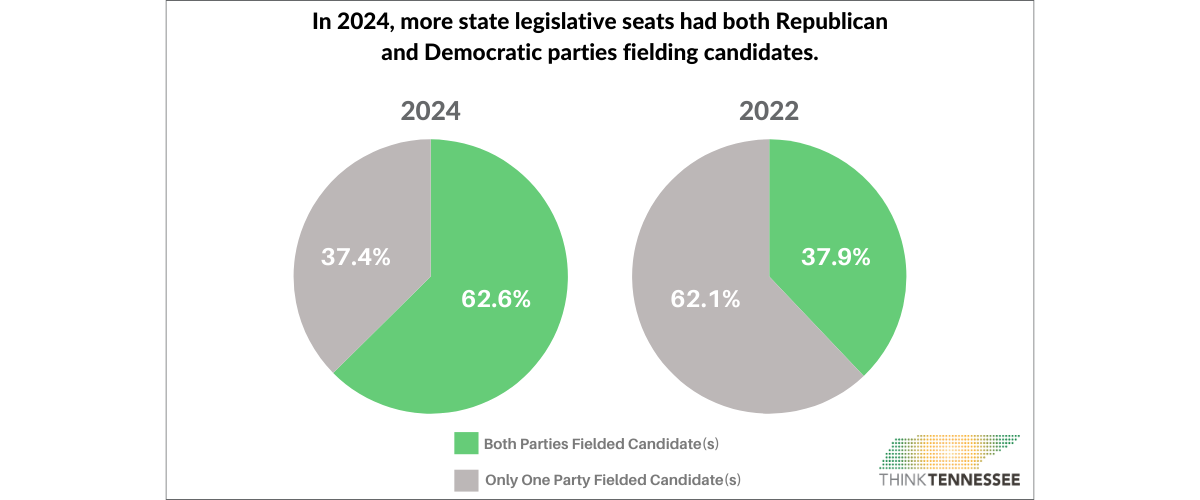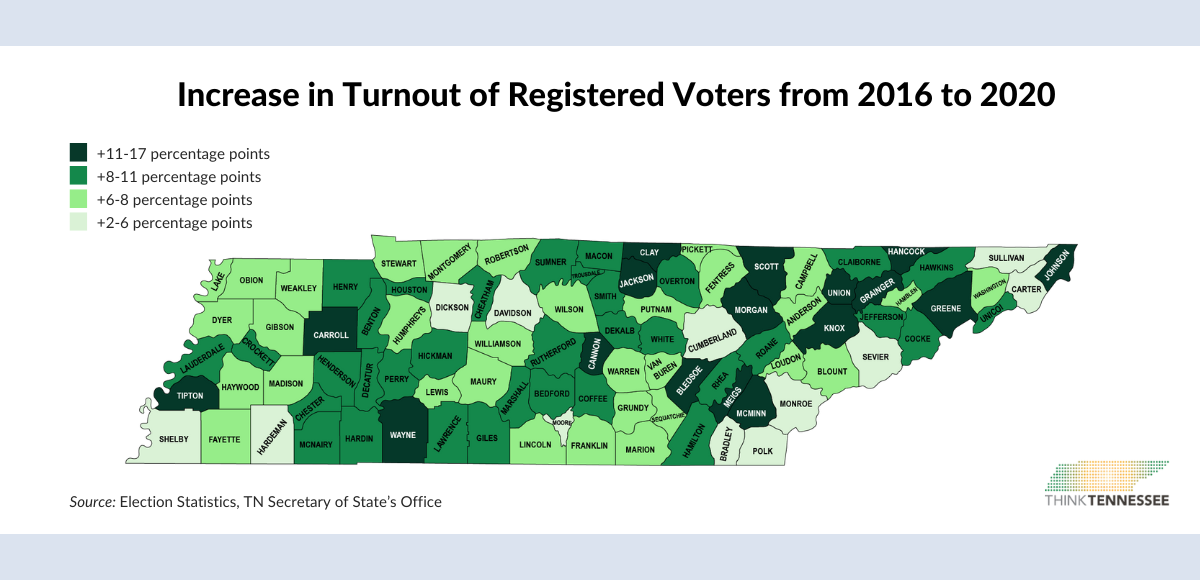Tennessee voters returned to the polls for the August 1st state and federal primary, and state and county general election. Tennesseans chose the Republican and Democratic candidates for federal and state legislative offices running in November’s general election, whether to retain state court justices, and candidates for a number of city and county level offices.
While we’re still waiting on the state to post the official results, we have some early takeaways to share: voter turnout was historically low, more candidates ran in state legislative races than in 2022, and three races came down to less than 200 votes.
 Fewer registered voters cast ballots than in any other similar August primary in recent history.
Fewer registered voters cast ballots than in any other similar August primary in recent history.
The Tennessean reports that only about 13.9% of registered voters cast ballots in the August election.[1] That is 10.6 percentage points below 2020 (24.5%) and just below 2016’s (14.1%) participation rate. Historically, August turnout during presidential election years ranged from a high of 26.2% in 1996 to a previous low of 14.1% in 2016, averaging about 17.9% over the last eight election cycles.[2]
More candidates ran for state legislative seats, but voters still had limited choices.
This election cycle, significantly more state legislative seats had both Republican and Democratic parties fielding candidates (62.6% of seats) than in 2022 (37.9% of seats).[3] This means when voters head to the polls in November, they will have more options (where two candidates will be on the ballot) than they had last cycle.
While there were more Republican and Democratic candidates running for seats – both parties can hold a primary for each seat, and voters can participate in one of them – voters only had a choice to make (i.e., more than one candidate to choose from) in less than a fifth (19.6%) of the primary races. [4] The majority (63.2%) of state legislative and congressional primary races had only one candidate on the ballot. [5]
A few state House races were decided by fewer than 200 votes.
As a good reminder that every vote matters, three of the eight primary races to fill open seats in the state legislature came down to fewer than 200 votes: District 65 (95 votes); District 96 (132 votes); and District 20 (139 votes). One primary challenge for a sitting House member (District 33) was decided by 258 votes.
On to November 5th!
The election is just 76 days away, are you ready? Now is the time to check your registration or get registered if you’re not already (the voter registration deadline is October 7th). If you have questions on how it all works – how can you register or how can you cast your ballot? – check out our 2024 Voter Education Series for information on how the process works (now available in Spanish and Accessible formats, and coming soon in Arabic!).
FOOTNOTES
[1] The article states that just over 637,500 voters participated in the election, and, according to the secretary of state’s office, there were nearly 4.6 million registered voters as of July 2024.
[2] The secretary of state’s website has voter turnout data going back to 1996. See https://sos.tn.gov/elections/statistics
[3] In Tennessee, all state House seats and half of the state Senate (alternating between even and odd districts) are up for election every two years. The last legislative primaries were in August 2022.
[4] More than one candidate ran in 16.2% of House races, 28.1% of Senate races, and 40% of congressional races. The remainder of the races either had one, or no, candidate.
[5] Only one candidate was on the ballot in 65.7% of House, 56.3% of Senate, and 60% of congressional races.








